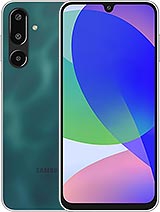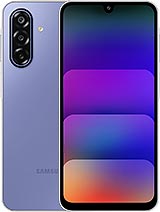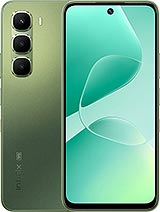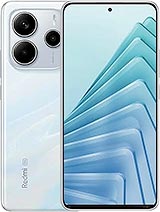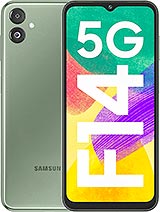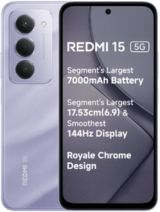Redmi 13C alternatives
Tap above to see alternatives.
Redmi 15 alternatives
Tap above to see alternatives.
2x2.2 GHz Cortex-A76
6x2.0 GHz Cortex-A55
2x2.3 GHz Cortex-A78
6x2.0 GHz Cortex-A55
6GB 128GB (UFS 2.2)
8GB 256GB (UFS 2.2)
8GB 128GB (UFS 2.2)
8GB 256GB (UFS 2.2)
f/1.8, 28mm (wide), PDAF
0.08 MP
(auxiliary lens)
f/1.75, (wide), 1/2.88" 0.61μm, PDAF
Auxiliary lens
f/2.2, (wide)
SIM1: Nano, SIM2: Nano
7 5G bands
n1, n3, n5, n8, n28, n40, n78
7 5G bands
n1, n3, n5, n8, n28, n40, n78
In this performance comparison, the Redmi 15 with its Qualcomm Snapdragon 6s Gen 3 (6nm) performs better than the Redmi 13C with the Mediatek Dimensity 6100+ (6nm), thanks to superior chipset efficiency.
Both Redmi 13C and Redmi 15 offer the same software support — 2 years of OS updates and 4 years of security updates.
Both Redmi 13C and Redmi 15 use LCD screens. In terms of smoothness, Redmi 15 offers a higher 144 Hz refresh rate, ensuring fluid scrolling and animations. Redmi 15 also boasts a brighter screen with 850 nits of peak brightness, enhancing outdoor visibility. Notably, Redmi 15 offers a higher screen resolution, resulting in sharper visuals and more detailed content.
Redmi 15 features a larger 7000 mAh battery, potentially delivering better battery life. Redmi 15 also supports faster wired charging at 33W, compared to 18W on Redmi 13C. Redmi 15 supports wireless charging at -2W, while Redmi 13C lacks this feature.
Redmi 15 offers better protection against water and dust with an IP64 rating.
- Redmi 15 – Check price here
¹ Scores can vary even with the same chipset due to RAM, thermals, and software optimization.



